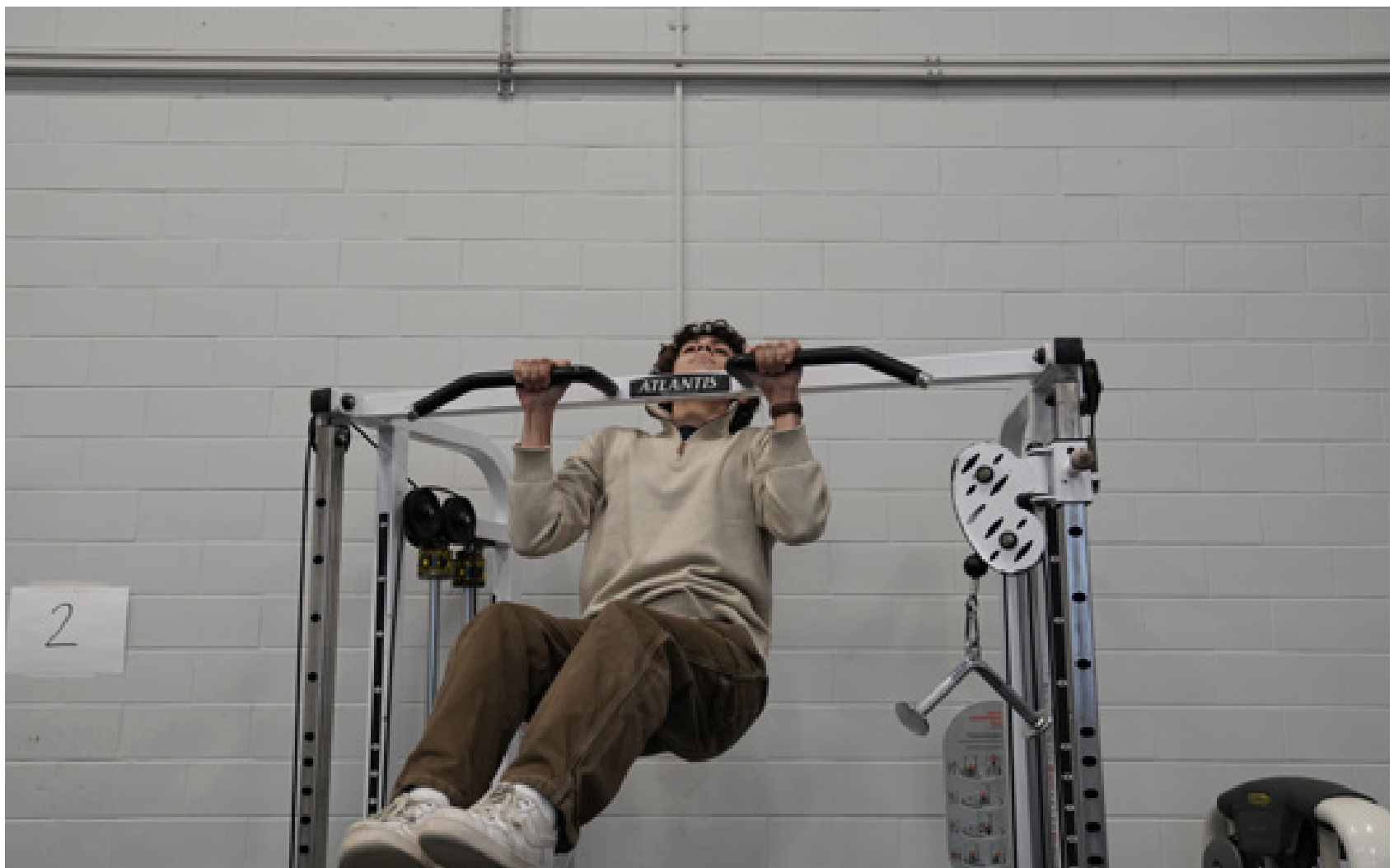Bodyweight fitness: how calisthenics is redefining strength training
September, 2025
Photo: Charley Hu
A form of exercise, calisthenics, has begun to gain more attention through social media. Online fitness celebrities such as David Laid and Simeon Panda showcase their strength by doing bodyweight movements that seem to defy gravity like the planche or handstand pushups.
“I think there are a lot of pretty popular influencers that do calisthenics, especially in terms of short-form content. For me personally, [that content] is what also inspired me to get started with calisthenics,” said Ronald Qiu ’26.
Though calisthenics may seem like a new fad, Angelo Andriotis, owner of the International Calisthenics Academy in Greece, says its roots can be traced back to 600 B.C: “calis” comes from the Ancient Greek word “kallos,” meaning beauty, and “thenics” comes from “sthenos,” or strength. Under Spartan rule, leaders relied on calisthenics to train soldiers. The reason why it continues to be widespread mainly ties back its benefits and the overall nature of the exercise.
The main function of calisthenics, as concluded by Thomas Rosmond et al., is to build functional strength, because these exercises target multiple muscle groups in the body while enhancing flexibility, coordination, and posture. Performing daily tasks in life would become much easier because a lot of calisthenic exercises mirror daily movements like pushing, pulling, and squatting. Furthermore, with increased mobility, one would be at a lower risk of injuries and have increased joint health.
“I think that one of the best benefits of calisthenics is its [convenience]. You can do it anywhere, anytime, [and] you don’t need fancy equipment to do [it],” said Qiu.
Calisthenics is beginner friendly; many basic bodyweight exercises like squats and pushups are relatively easy for people to master without major risk of injury, so people can improve their form and build confidence in their balance and strength. This enables the transition into weight training, but it’s important to keep in mind that lifting and calisthenics are separate exercises for different intentions.
“[When] lifting weights ... you’re pretty stationary because you’re the one pushing the [weight]. With calisthenics, you’re using your body as the weight, so it’s a lot more mobile, and also, you get better control of your body,” said Qiu.
Like Qiu, Jake Winn ’26 started calisthenics two years ago and continues to improve his routine.
“A good [calisthenics plan spans] anywhere from like six days a week, and you probably only need half [an] hour a day to get results,” said Jake Winn ’26.
According to Pat Chadwick, a certified calisthenics coach, a plan should start off with the easier moves such as lunges and planks. As the workouts get more advanced, equipment like gymnastic rings, pull up bars, parallel bars, and resistance bands are often used but aren’t necessary.
“You could have a pull up bar at home, but you don’t need a lot of materials because you could go to any playground or gym and do pull ups, muscle ups, [and] dips,” said Winn.
Though the end result may seem unattainable, it is important to remember that everyone starts somewhere, and the only way to progress is through consistent effort.
“If you’re thinking about starting calisthenics, you should, because progression comes fast at first, and it’s actually very rewarding to see,” said Qiu.